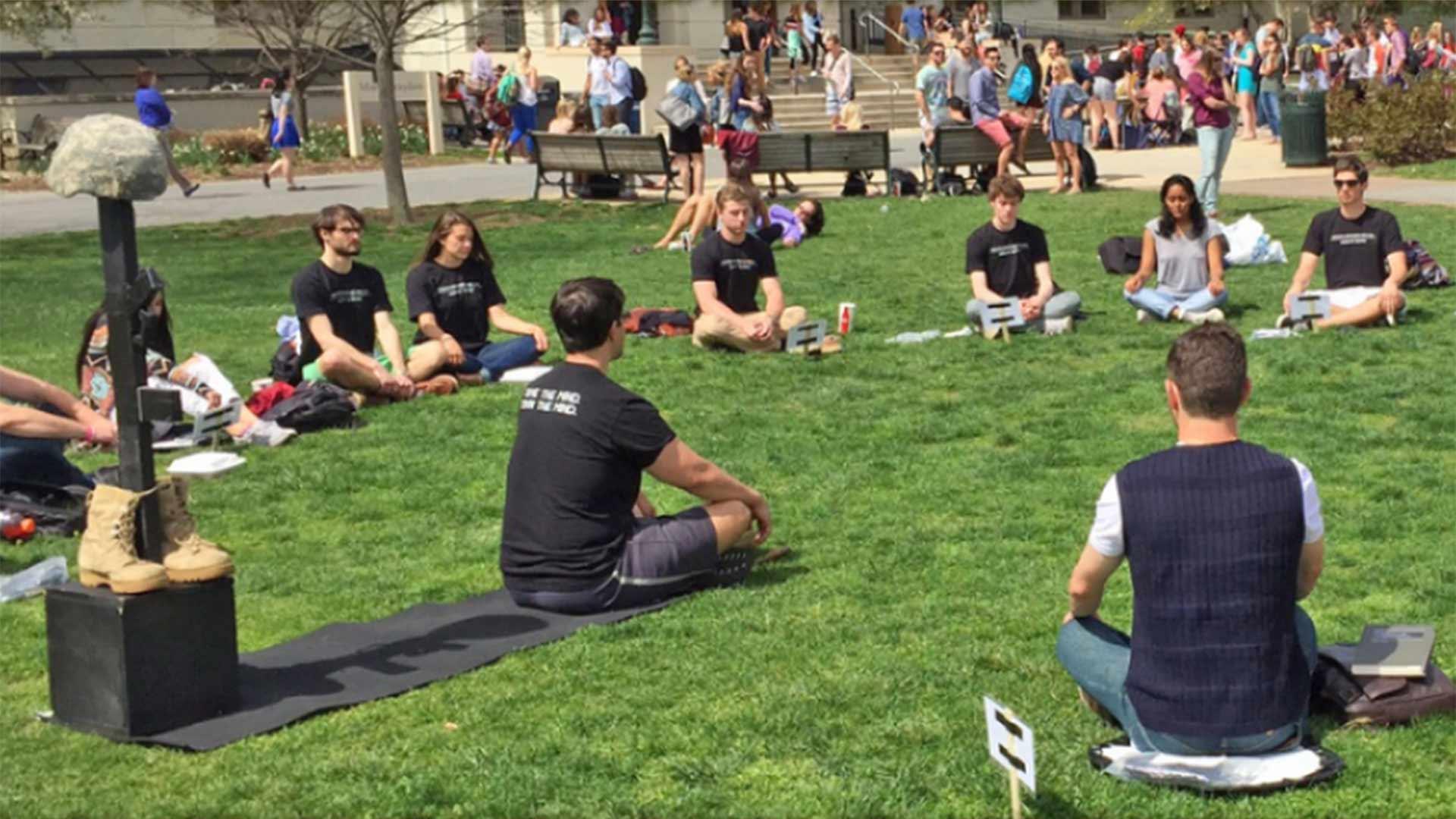
(Photos courtesy of the Phillips Collection)
After serving as an Army psychological operations team leader in Iraq, Ben King quickly learned that what had helped him survive in a war zone wasn’t conducive to thriving in civilian life.
“When you’re in a combat environment, mentally it’s just putting the mission first—when it comes to what’s going on for you, it’s very simple: You just disregard it,” King said. Detaching from his internal struggles soon led to drinking to help fall asleep, ignoring physical pain and powering through any emotional turmoil.
King eventually discovered yoga and mindfulness, which he found “to be very different from (the) no pain, no gain” mentality of the military, and started a blog he called Armor Down, a reference to removing Humvees’ armored doors once back in a safe location.

This evening, in an event co-sponsored by the University of Maryland, King will be part of “Artists of Conscience: Veterans, Art and Wellness,” a panel discussion at the Phillips Collection in Washington, D.C., to explore how art, wellness and mindfulness can help veterans with post-traumatic stress disorder (PTSD) or traumatic brain injuries readjust to life after deployment.
Veteran suicide has increased over the last 15 or so years, from 5,787 in 2005 to 6,139 in 2017, according to the Department of Veterans Affairs. The report also found that the suicide rate among veterans in 2017 was 1.5 times the rate for non-veterans. Veterans Affairs estimates that 12% of veterans of the conflicts in Iraq and Afghanistan suffer from PTSD in a given year.
Feeling adrift after leaving behind the clear parameters and purpose of his military role, King found the tools to move away from what he calls “a mindset of hyper-vigilance” through yoga and mindfulness. Armor Down expanded into a foundation helping veterans learn how to implement mindfulness techniques in their own lives. Focusing on the present moment, releasing tension from muscles, and concentrating on the five senses and breathing deeply have helped King “connect to meaning and purpose and the things that give life its oomph,” he said.
Connecting people to a richer experience of life has been part of the Phillips Collection’s mission since its beginnings, said Klaus Ottmann, chief curator and deputy director for academic affairs at the Washington, D.C. museum. When founder Duncan Phillips’ father and brother died in quick succession in 1918, he found relief from his grief only in art, and hoped to share its healing power more widely by opening the collection to the public in 1921.
“There’s a lot of data … that shows that art can be a very powerful tool to help people heal on an individual level,” said Ottmann. “We also believe that there’s societal wellness that art plays a great role in.”